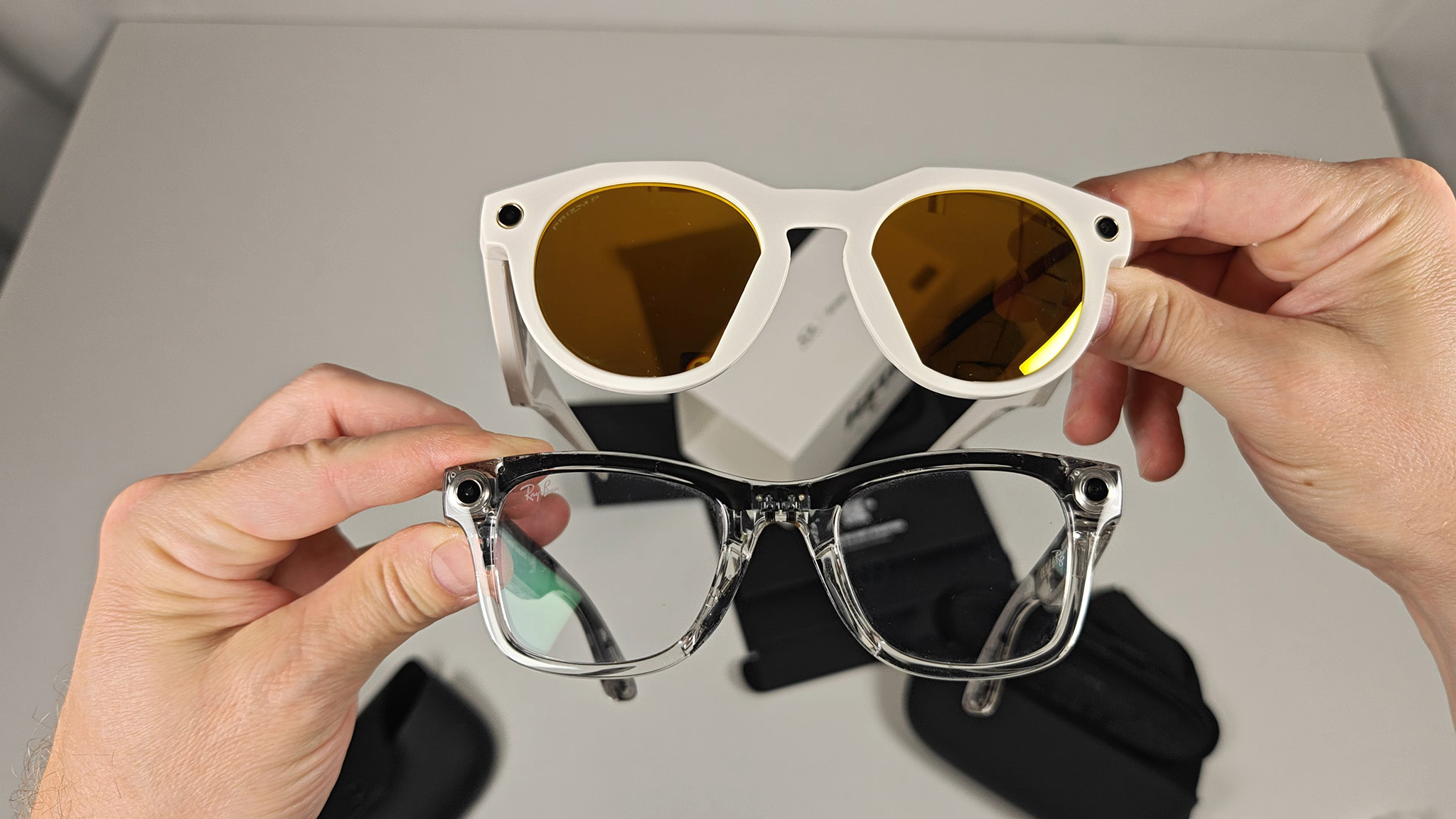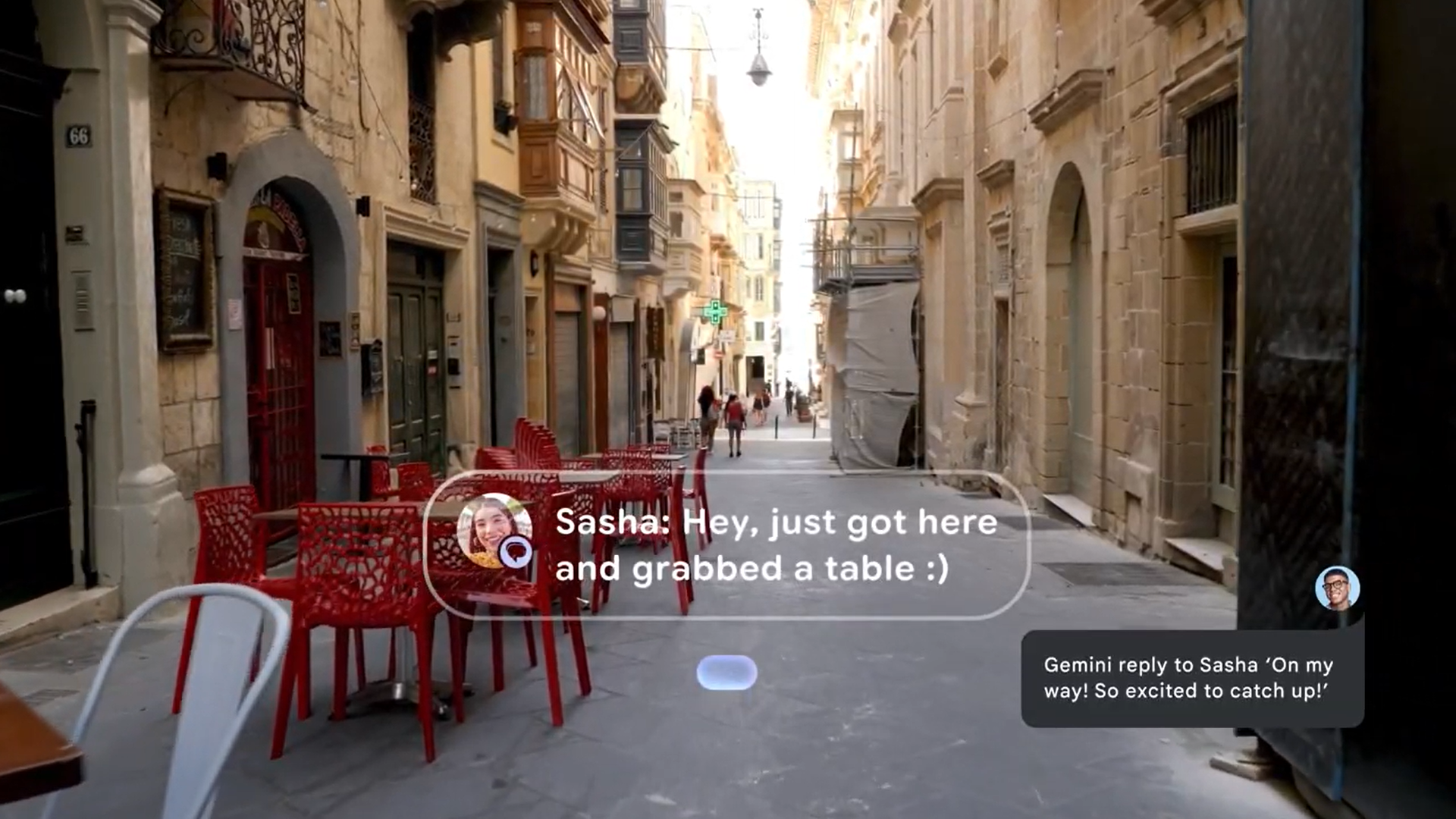We're less than a month away from Meta Connect 2025, where we're rumored to seeMeta's $800 Hypernova smart glasseswith a single display in the right lens. I expect plenty of people will balk at buying smart glasses with "only" one display. But having tried both monocular and binocular smart glasses, I think Meta is making the right decision — and Google would agree with me.
The original Google Glass had a monocular display, and a decade later, when I triedGoogle's Android XR reference design at I/O 2025(see the photo above), they had only one display. This isn't a coincidence!
Meta CTO Andrew Bosworth explained why monocular smart glasses are so much easier to create during an August AMA (viaUploadVR): "They are affordable, they are lighter, and you don't have disparity correction, so they are structurally quite a bit easier."
Switching to binocular displays "more than doubles the cost" because, in addition to a second display and an eye-tracking camera, you have to ensure perfect interpupillary distance and prevent any disparity between what the user's two eyes see.

That's why Meta's monocular Hypernova glasses can (allegedly) cost less than a thousand dollars and blend in as somewhat "normal" glasses. Would people care as much about them if they cost $2,000?
Meanwhile, itsMeta Orion prototypeneeds thicker frames for the extra power and battery demands of two large displays. And while Orion's$10,000 costMostly comes down to silicon carbide lenses, that cost would be more than halved with one display.
The concern with a monocular display is "binocular rivalry," Bosworth says, because "one eye is seeing something, the other eye isn't seeing it, and your brain has to reconcile that, and different people experience that very differently."
But again, having tried Google's latest monocular glasses, I'm mostly not concerned. And I don't think you should knock them until you try them.
Trust me, we don't need two displays yet

Out of everything I heard at Augmented World Expo 2025, every AR expert agreed thatThere's no one set path for smart glasses, but that any binocular glasses or "smart goggles" like theXREAL One ProThey aren't going to blend in as normal glasses for years. The form factor simply can't fit in the battery, holographic technology, cameras, and other essential technology without ballooning in size.
There's a reason why Meta has teamed up with Ray-Ban and Oakley, while Google partnered withWarby Parker and Gentle MonsterSmart glassesneedTo look good and familiar, or not enough people will wear them to make money. The thicker they get, the harder it is for people to see the resemblance.
Most importantly, smart glasses need to functionwithouta display. Assistants like Meta AI and Gemini will be your primary controller and source of information, with the display there to show their data in a more accessible way. So adding a second display, which will drain your battery life more quickly until you can't access the assistant at all, is a poor allocation of resources. Smart glasses can only replace regular glasses if they are worth wearing all day, not just at odd moments.

That said, Google's monocularAndroid XRGlasses genuinely impressed me, proving that a display can be subtly helpful. You get a seamless pop-up showing Gemini answers to questions, calendar entries, recent Messages, live translations, and other data that's easily readable but doesn't take up your entire vision.
It's like being able to glance down at your smartwatch for a notification, only with a more subtle downward glance. And in fact, the Android XR version of Google Maps shifts from basic directional guidance to a full map when you look downward, signaling the glasses that you want more information.
Maybe some people will be more bothered by a monocular display — especially if they are not right-eye dominant — but it felt totally natural, sitting in my vision without any blurring, but not feeling so distracting that I couldn't focus on what is in front of me.
Binocular AR glasses might make these pop-ups even clearer, but they'll have to reconcile the image in the center of your vision. While that's great for extended displays for gaming or streaming while you're lying in bed, I don't know how much more helpful it will be outdoors when you're walking around.
That's why I think monocular smart glasses are the best way to introduce this technology to a wider audience. It's simpler to implement, and you don't have to worry as much about things like interpupillary distance when trying to give people a clear test demonstration.
So long as Meta, Google, and the rest remember that about30% of people are left-eye dominantand sell a smaller portion of left-display glasses, I don't think people will have any trouble adapting to monocular smart glasses. Either that, or they'll just keep buying normal smart glasses likeOakley Meta HSTNorRay-Ban Meta Gen 3sthat don't even need a display.
Like this article? For more stories like this, follow us on MSN by clicking the +Follow button at the top of this page.
0 comments:
Ikutan Komentar